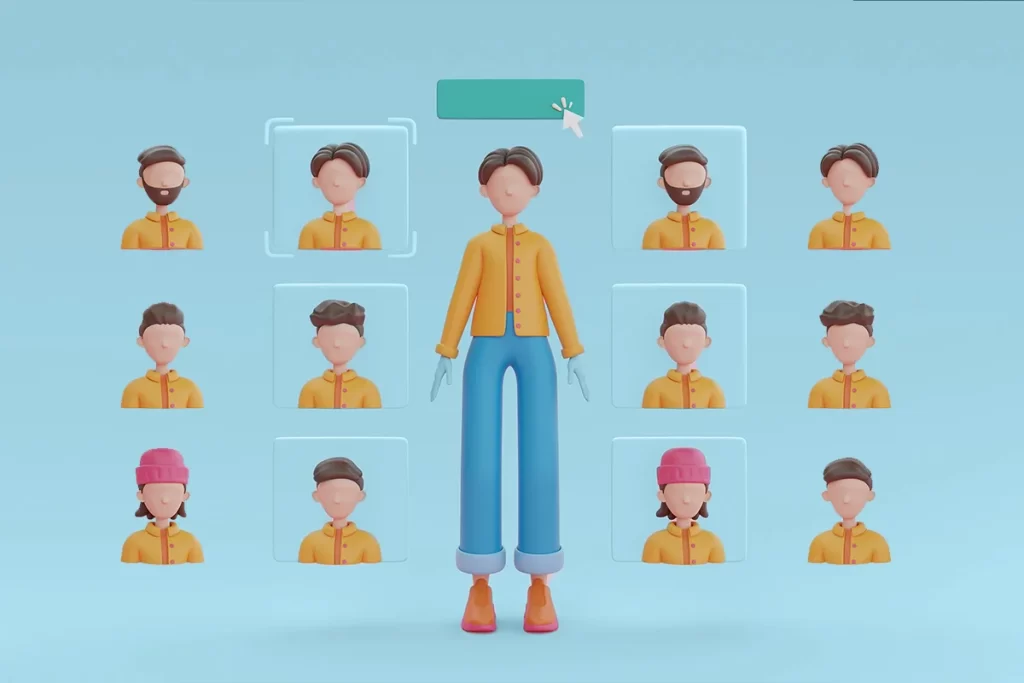Empires have fallen and risen, but some stayed in all their glory and kept rising and rising.
What do the Walkman from Sony Ericsson, those Kodak cameras, and those Blackberry and Nokia cell phones have in common? Well, the first thought that might’ve occurred to you might be a collapse, caution we are not here to discuss failures because while businesses do rise, fall, and some remain static, that is not the issue; rather, what matters is why some businesses are growing and succeeding quickly and how they are still existing in the fold where the competition is more intense and extensive and the consumers are too intolerable. But there is something that is both motivating and mandatory: the proper course that certain businesses have chosen, and today we will talk about it.
So, you’d like to create a digital product? According to history, to produce a successful product or service, you must build it for someone. A product that has no clients is like a floppy disk in the twenty-first century…useless. That’s why competent Product Managers have a designated toolkit, inclusive of user personas so that the development teams are focused on the client.
Being customer-focused (or customer-oriented) aids in the development of better products for one simple reason: it allows our product to truly address the problem or meet the need.
When you begin making a product without a target user in mind, you cannot be certain that anyone will want it or that you will not need to make significant changes and modifications to make it operate better later. Like New Coke and the Zune, will go down in history as a failed product with no product-market fit.
So, it’s time to start thinking about your customers and establishing those crucial user personas!
What Exactly is a User Persona? Introduction to the Concept
A user persona is a theoretical portrayal of your ideal consumer. As a UX designer, you’ll begin the design process by performing user research, which will allow you to develop empathy with your target users and determine exactly what they require from the product you’re creating. An effective persona incorporates the needs, objectives, and observable behavior patterns of your target audience and is often founded on user research.
User personas are fictionalized depictions of your target audience that are the result of in-depth analysis and research. A design or production team might use these insightful archetypes to better grasp “who they are creating for and what their preferences are.”
It provides you with information on your target market’s preferences. You may assess the success of your UI and UX design, for instance, by developing user personas for your mobile apps and web development.
The references and sample data applied are consistently obtained from real-life experiences and derivations, even though a user persona may be made up. It might contain information about a user’s demographics, personality qualities, reason for utilizing a product, expectations and goals, difficulties, etc.

How to Generate User Personas
This article will walk you through the procedures necessary to construct user personas and includes a template for outlining the details.
-
Determine Who Intends to Use Your Product.
Personas must be as accurate as possible, hence spending as much time as possible studying your target users. What is their function? How long have they been in business? What are their preferences and dislikes? This information allows you to imagine a typical user and view your product through their eyes.
The particular facts you need to record will differ depending on your business, market, and product type. The following are the various forms of information that can be gathered:
Personal Information: Age, Education, and Location
Professional History: Job title, Salary, Skills, Responsibilities, and Experience
Psychographic Information: Goals, Challenges, Likes, and Dislikes
To inform your research, you can use both qualitative and quantitative data, such as personally interviewing users, reading support tickets, speaking with teams who engage with users, and evaluating product usage.
-
Sort Your Typical Users Into Groups.
You will certainly need to establish many personas to reflect different user groups. Once you’ve acquired enough information, check for distinguishing qualities and behavioral patterns.
Each user persona group has its own set of aims, demands, and desires. Understanding the distinctions between these categories is critical for directing the prioritization, design, and development of new product features.
-
Create a User Persona Template.
You are now ready to flesh out your identities. Give each one a name and a memorable image to represent your persona. Then, create an overview that distills the most important aspects of their background and preferences.
Here’s an example of a persona we produced for one of our client’s firms utilizing a persona template. “Saul” was the name of the persona, and we updated that user persona as well. Personas may vary from project to project, but a single persona is acceptable when client requirements are constant throughout the project.
It is possible to create a user persona using a variety of software solutions.
-
Send Out User Personas to the Team
Once completed, distribute your personalities to important individuals in your organization. Whatever format you use, it is critical that your personalities are easily available to the entire team. Your customers will be at the forefront of your thoughts and in all that you do if you link personas to your objectives, initiatives, releases, and features. Personas are an excellent approach to communicating research about your target clients. These are helpful reminders of your product’s goal: to meet the requirements of real people. You can create solutions that truly thrill your users when you understand who they are and what they want to achieve with your product.
User Persona Types
A semi-fictional concept of a user who might be in the near future your potential customer, these User personas are fictionalized depictions of your target audience that are the result of in-depth analysis and research. A design or production team might use these insightful archetypes to better grasp “who they are creating for and what their preferences are.”
Although a user persona may be made up, the sample data and references used are frequently drawn from actual experiences and derivations. It might contain information about a user’s demographics, personality qualities, reason for utilizing a product, expectations and goals, difficulties, etc.
For example, if your firm offers SaaS solutions, you may create different user personas for different types of users, such as individuals, groups, corporations, and so on, based on their distinct needs, preferences, and other characteristics. As a consequence, your team will be more prepared to deal with diverse scenarios and situations, as well as deliver better solutions, marketing plans, and so on.
After learning how to define a user persona and the steps to create one, let’s look at some examples of each category.
Proto Personas
Less research and more presumptions are used in this approach. Proto personas are used for fast representations in situations where in-depth research is either impractical or unnecessary.
Qualitative Personas
This method is based on sample or qualitative research, where only a small number of individuals are taken into account. To get the necessary information for building the personas, one can utilize surveys, usability testing, or interviews.
Statistical Personas
Personas are developed utilizing both surveys and statistical data gathered through various means in this process, which combines qualitative and quantitative research. Although statistical personas can be more precise and instructive, the procedure can be costly and time-consuming, and small organizations may not find it suitable.
User personas, in summary, can assist you in identifying various consumer pain points, anticipating circumstances and responses that your product may encounter, and helping you be ready for them. While the specifics and strategy may differ from business to business, user personas’ fundamental goal is still to assist brands in understanding and impressing their target customer.

Who is Entitled to Participate in User Personas?
Creating user personas and developing products based on them is a distinct process for established firms, as we previously stated. It’s worth noting that your company doesn’t have to be the size of one of the tech titans to use this strategy.
Concerned about your bootstrapped company’s low funding for other essential factors? The creation of user personas and the design of a seamless transition to supplying end-to-end solutions are both possible for businesses with few resources. To approach product creation with a Design Thinking methodology, you can work on a decent marketing budget.
How Does Design Thinking Work?
Design Thinking, a method of product development that places a premium on understanding and empathizing with customers’ requirements and motivations, includes key elements such as digital experience design and user experience management. Digital experience design, which involves designing and iteratively improving prototypes based on user feedback, aids in directing each phase of the design process by uncovering patterns through research. Because of this, users will have a seamless digital experience thanks to the UI design’s effectiveness and simplicity.
While an extensive discussion of Design Thinking is beyond the scope of this piece, the Nielsen Norman Group chart here will give you an idea of the general direction Product department’s journey when using the Design Thinking approach.
The “Define” step is where user personas are created, and those user personas inform every subsequent stage of the process, including the post-implementation phase, which takes us back to empathizing.
Seek Out Methods to Incorporate Personas into Regular Activities.
The creation of persona-inspired segments in your analytics tool is one way to incorporate personas into the ongoing product development process. These segments can not only be used to determine whether the user described in a persona is representative of the actual visitors to your website but they can also be used to reveal usage patterns and behavioral trends that would otherwise go undetected if data for all site visitors were combined.
Promoting personas is crucial, and a part of that is ensuring that they are helpful to everyone who has an impact on the user experience, such as content strategists. “Say we’re developing an experience for Snapchat. Experience is useless if the information is written for people in their 70s.
Agreeing among your team on how you’ll effectively use personas and how they are updated when new information becomes available that influences personas so they remain applicable and usable.
User Personas: An Ever-Changing Process
When used wisely, a guide for both novice startups and more established organizations can help businesses describe a better product market fit. Of course, completing these stages will not be the end of your user persona efforts because user personas are continually changing.
No user persona is ever really complete, just as no software product is ever truly complete. As your products improve to better serve your top user profiles, you’ll have more opportunities to learn more about those consumers, receiving input that will help you better understand the customer journey. As a result, you’ll be able to design more accurate personas and superior customer journey maps.
The market will shift, the competition will change, and your user base may look completely different than when you first introduced a certain product. By constantly researching and refining your user personas, you may build goods that meet their demands, increasing your market share in the coming years.
Do you have a vision for a software product that you’d like to make a reality? We can help you get started. Cuneiform Consulting has a team of talented designers and developers who have become experts in creating and supplying a wide range of solutions, including mobile apps and web-based software products.




